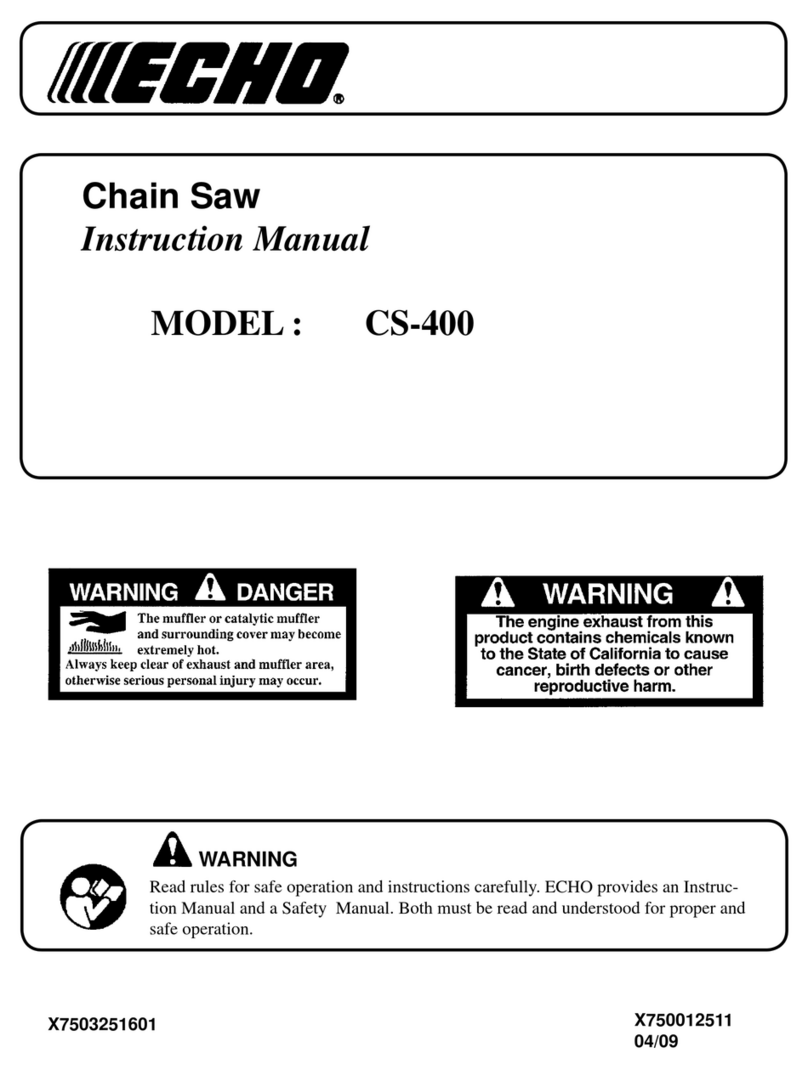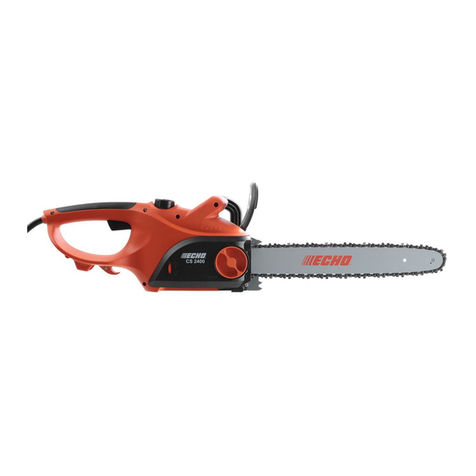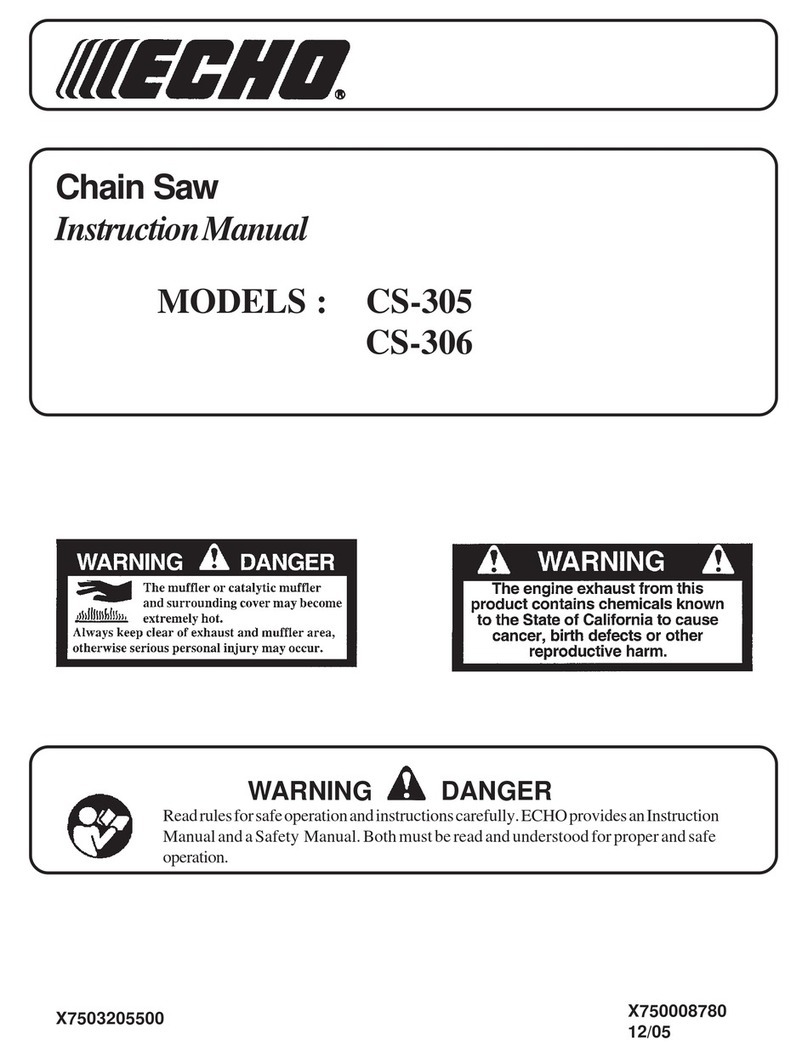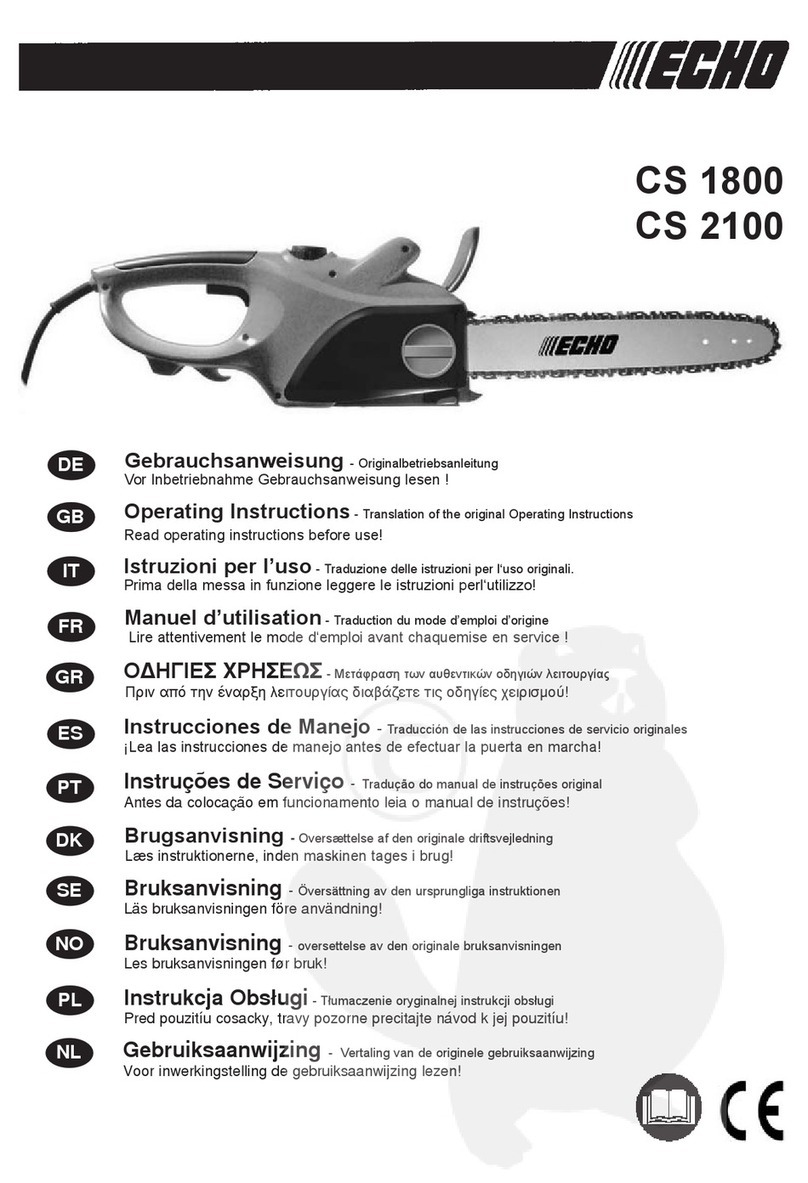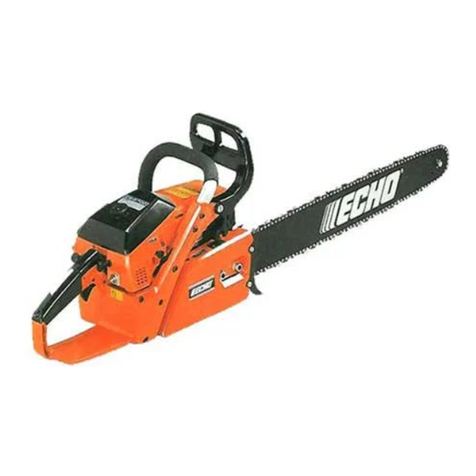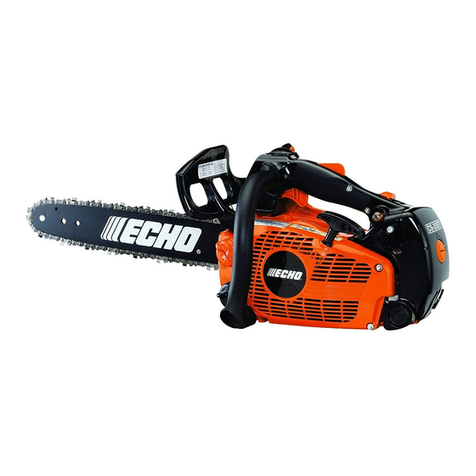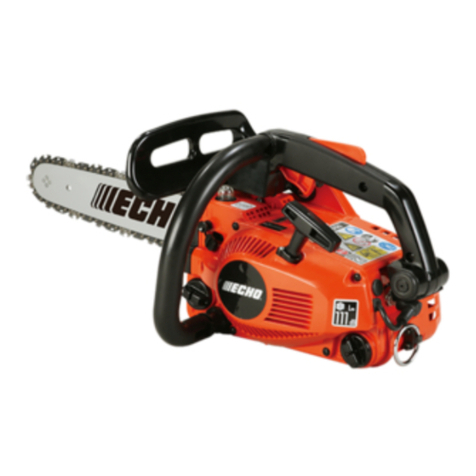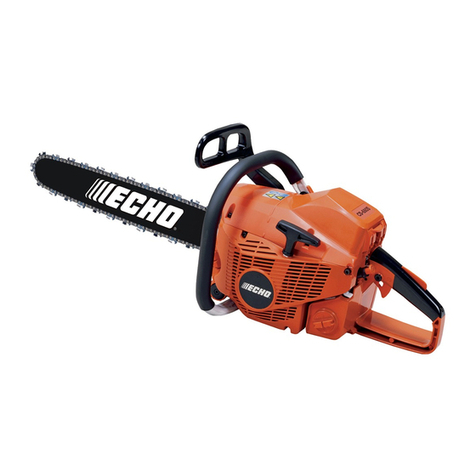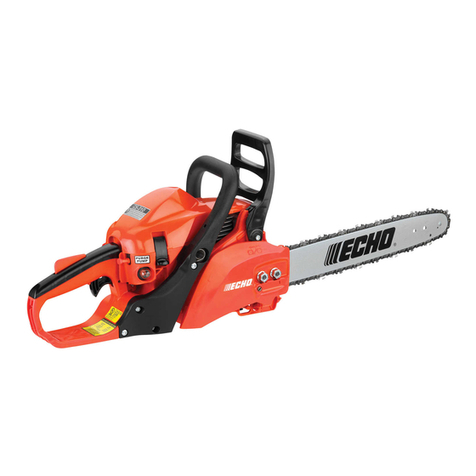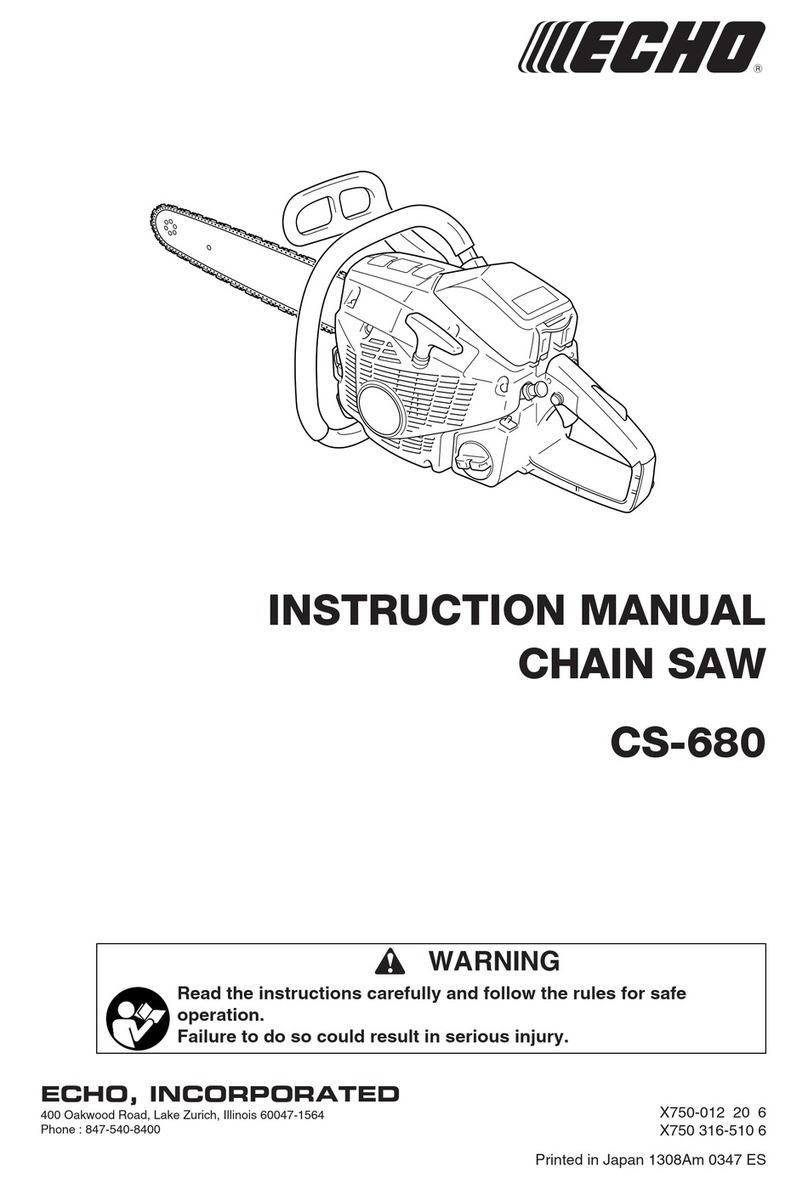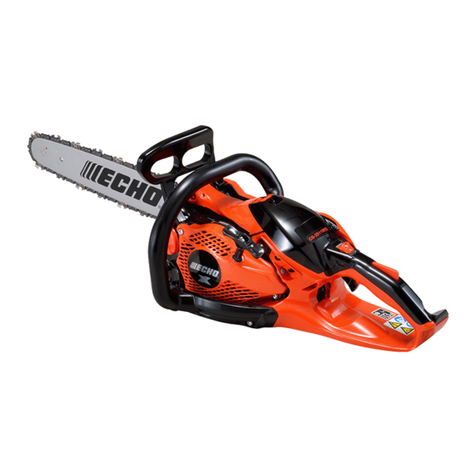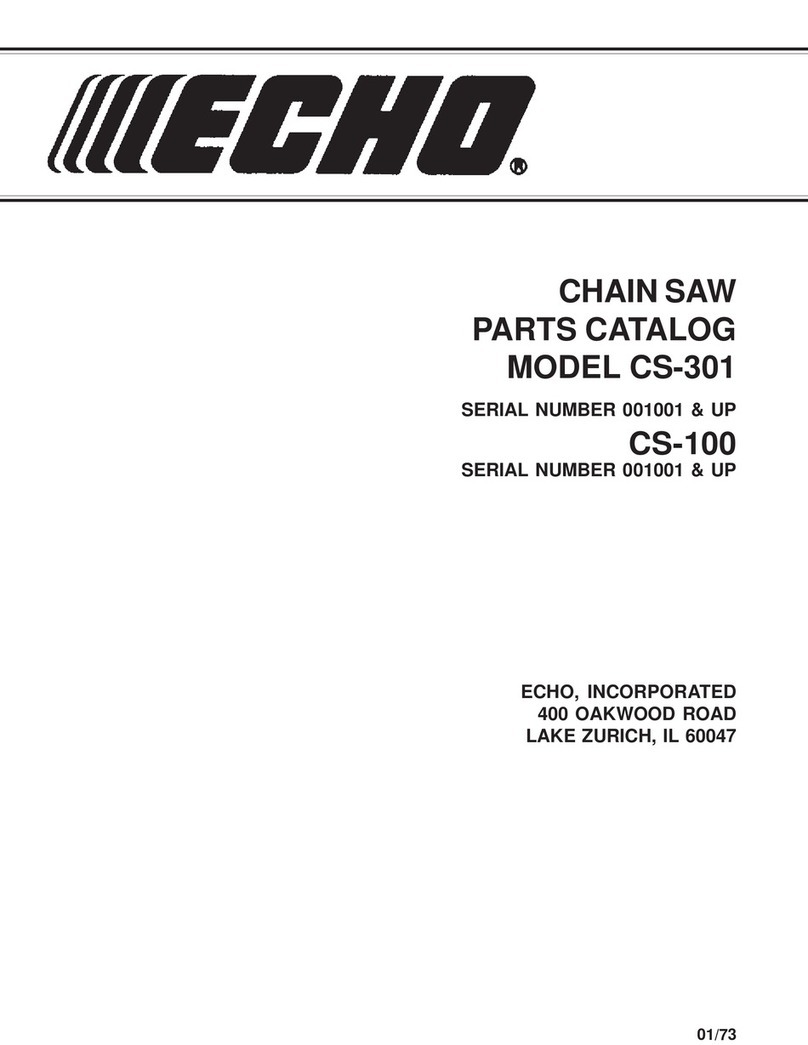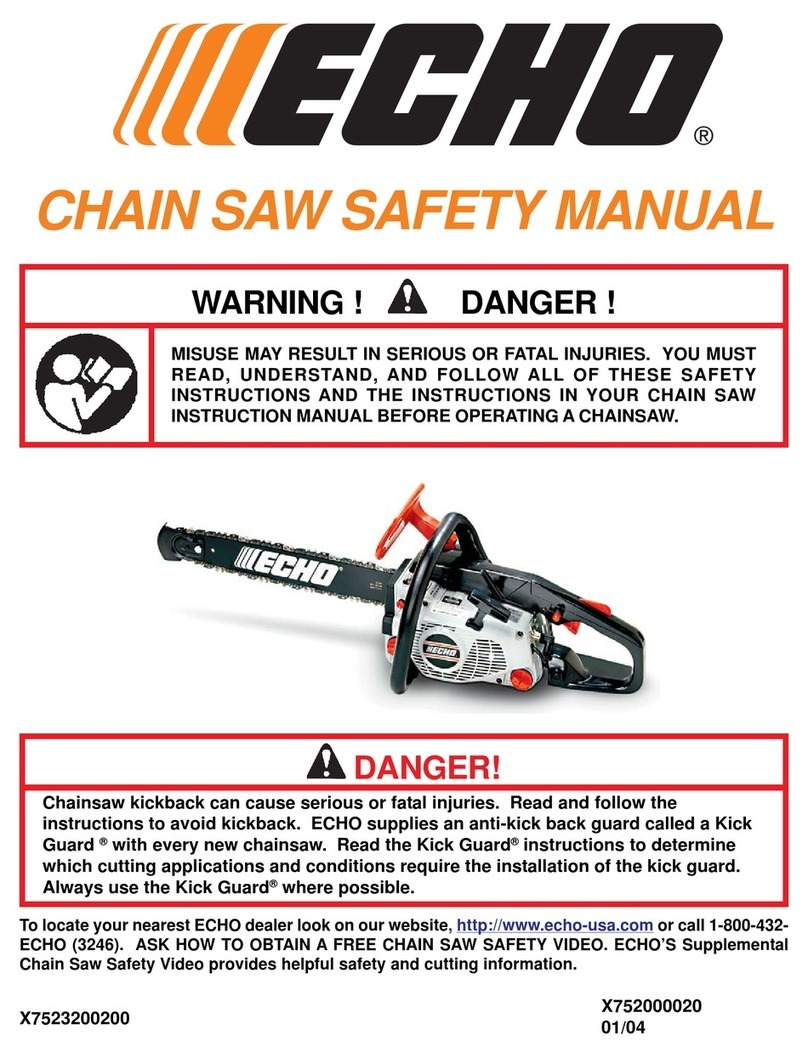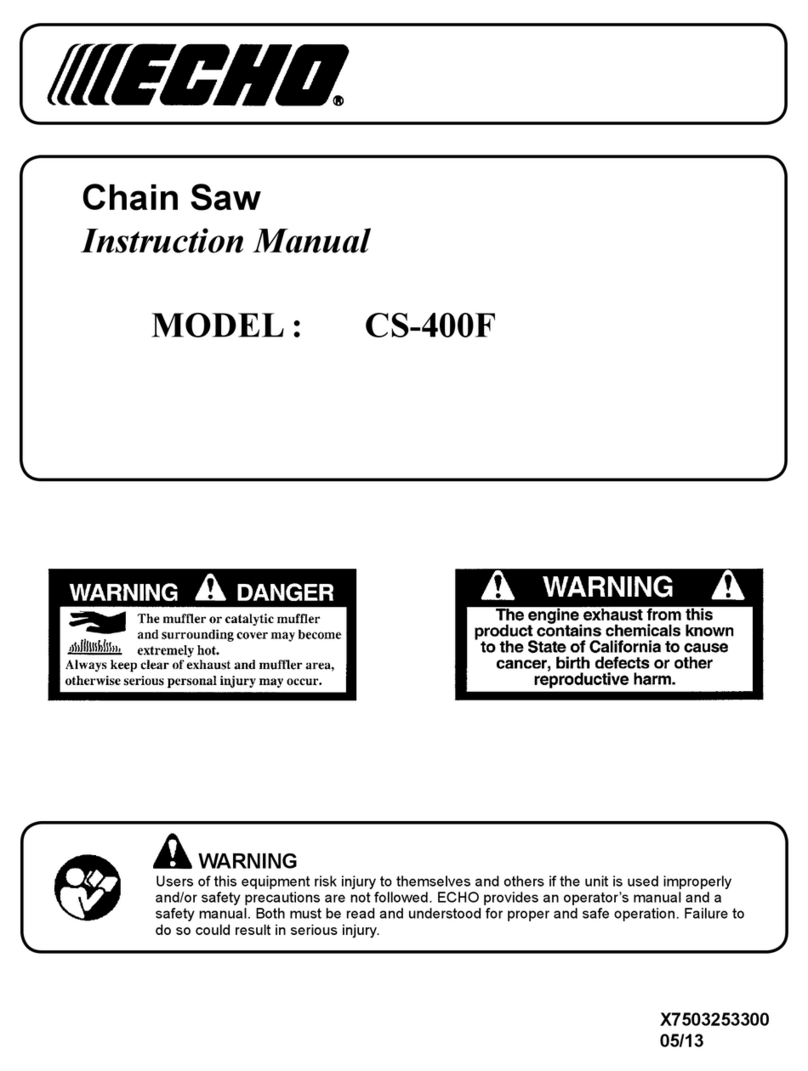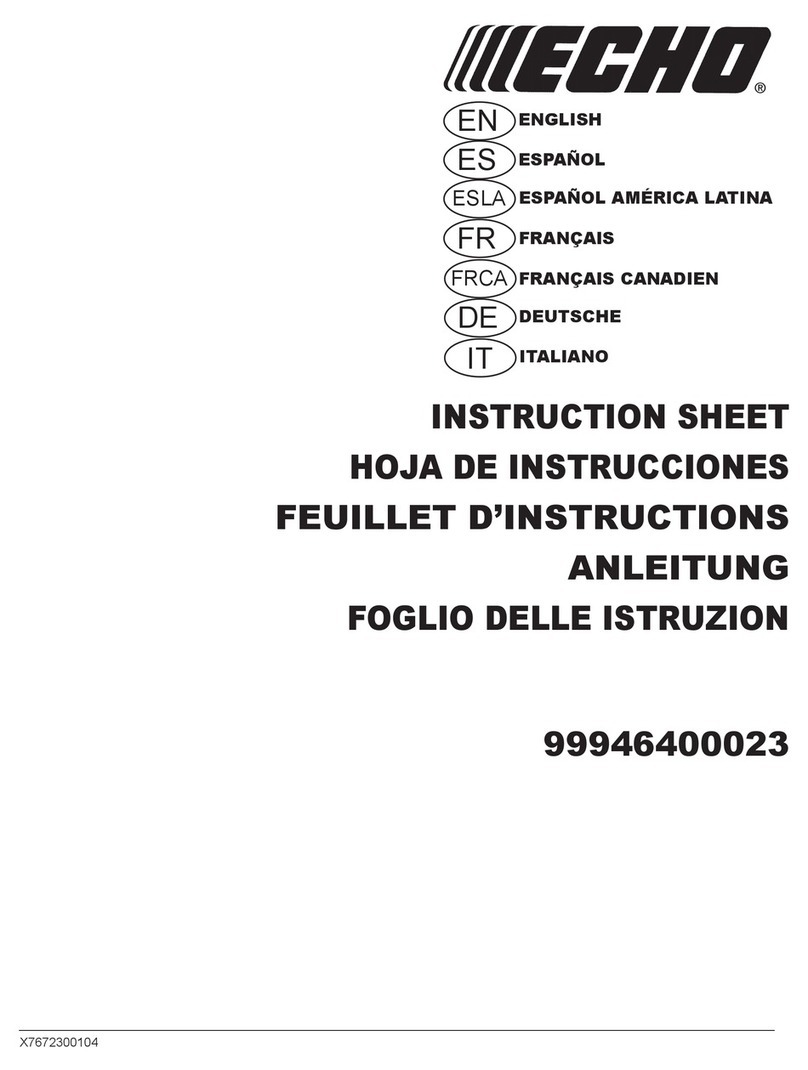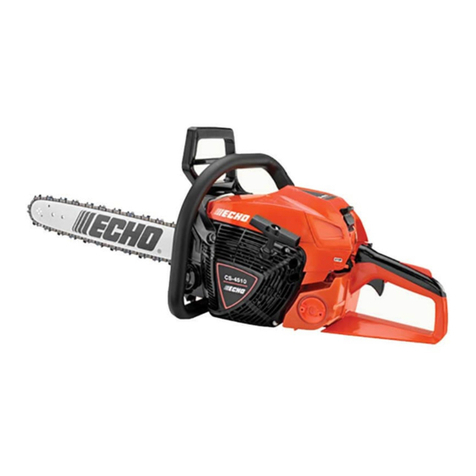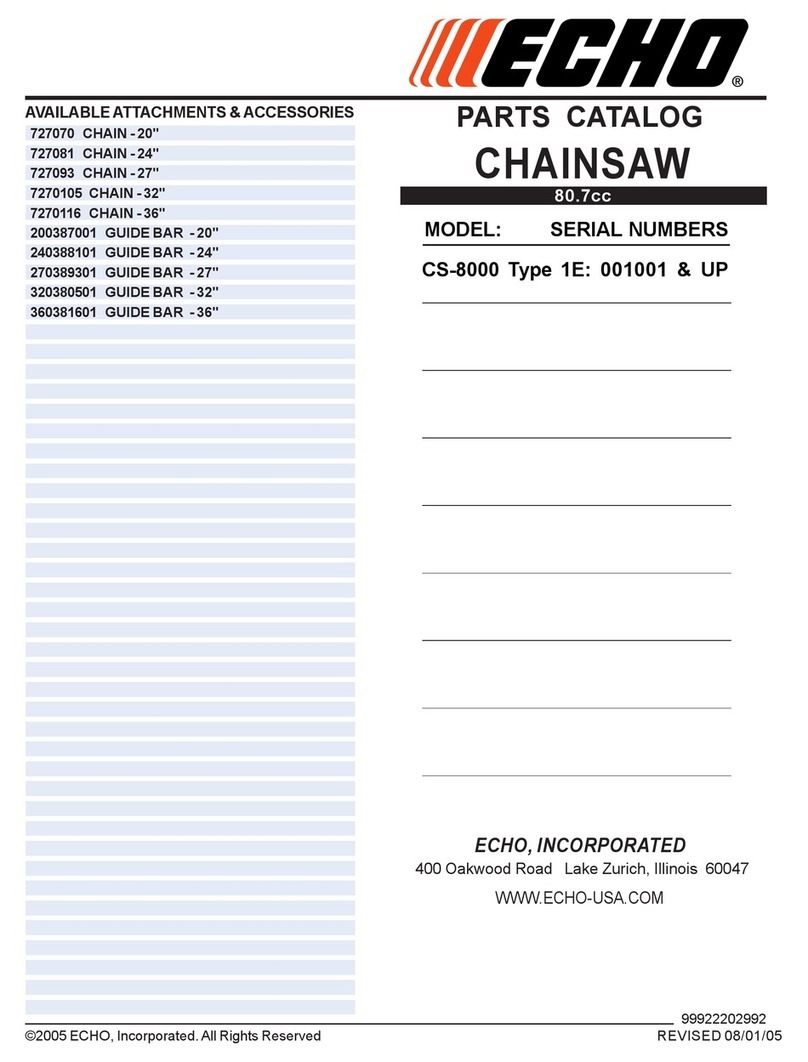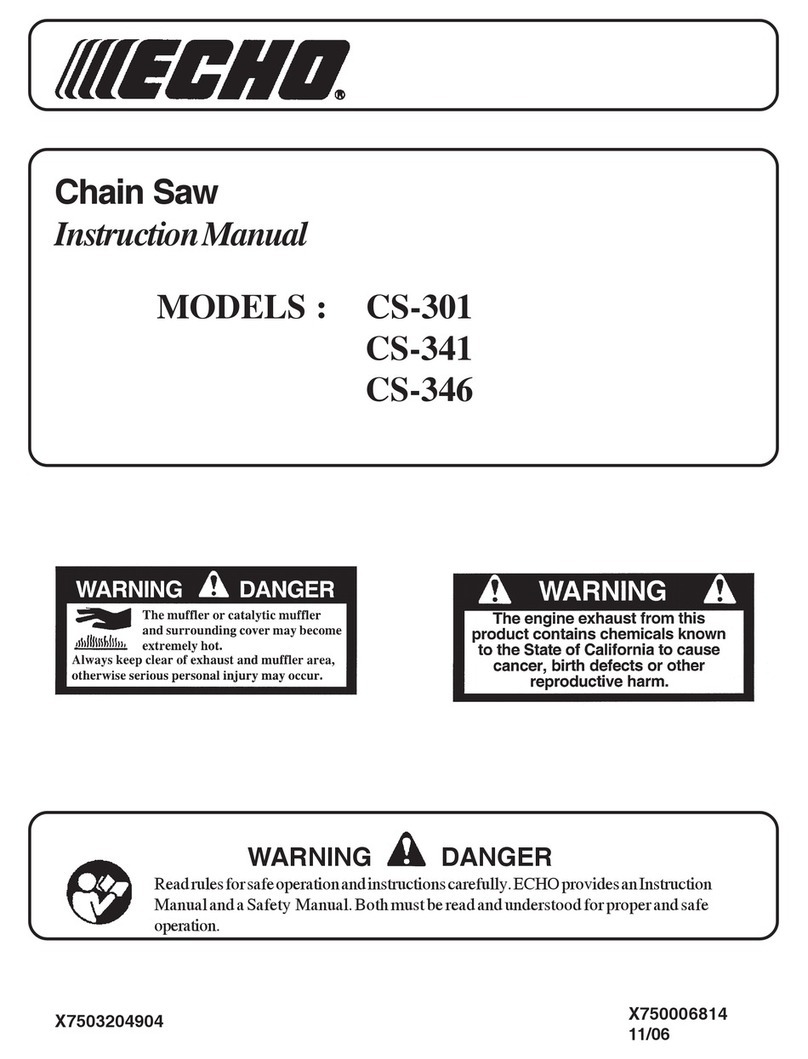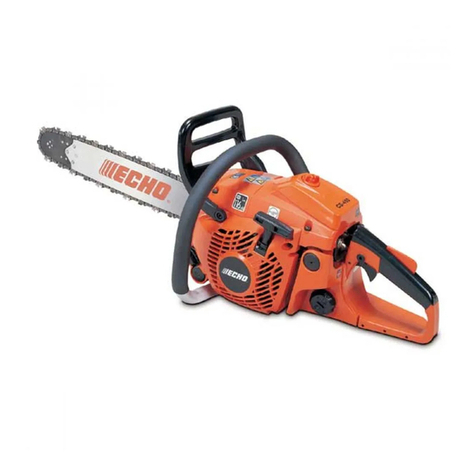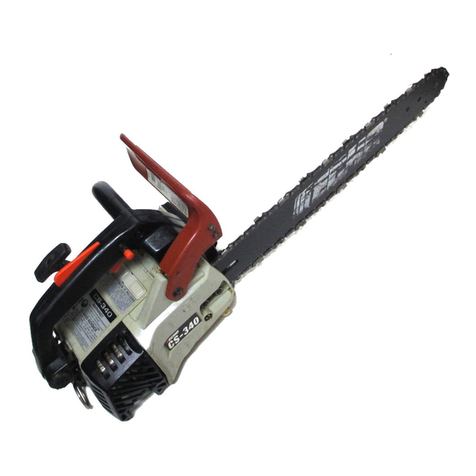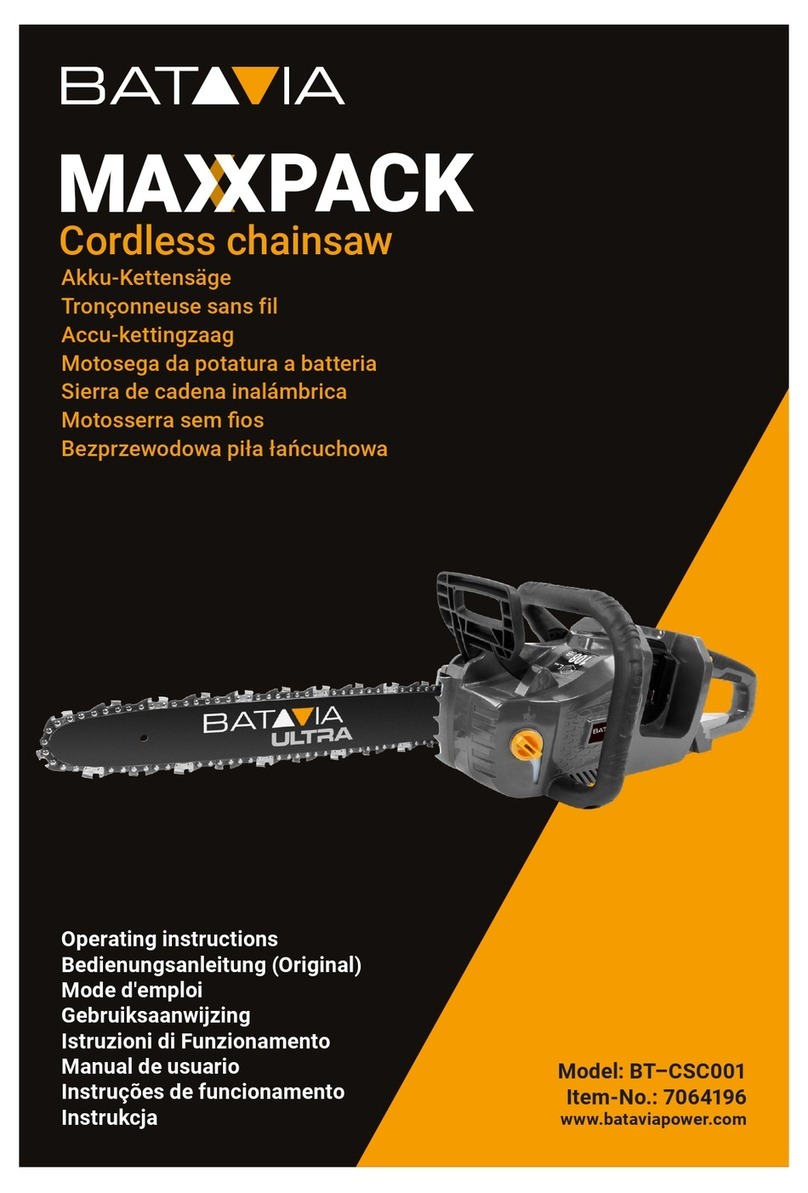7
VIBRATION AND COLD
• It is believed that a condition called Raynaud’s Phe-
nomenon, which affects the ngers of certain individu-
als, may be brought about by exposure to vibration
and cold. Exposure to vibration and cold may cause
tingling and burning followed by loss of color and
numbness in the ngers. The following precautions
are strongly recommended because the minimum
exposure which might trigger the ailment is unknown.
• Keep your body warm, especially the head and neck,
feet and ankles and hands and wrists.
• Maintain good blood circulation by performing vigor-
ous arm exercises during frequent work breaks and
also by not smoking.
• Limit the number of hours of operation. Try to ll each
day with jobs where operating the chain saw, or other
hand-held power equipment is not required.
• If you experience discomfort redness and swelling of
the ngers, followed by whitening and loss of feeling,
consult your physician before further exposing yourself
to cold and vibration.
REPETITIVE STRESS INJURY
• It is believed that over-using the muscles and tendons
of the nger, hands, arms and shoulders may cause
soreness, swelling, numbness, weakness and extreme
pain to the areas just mentioned. Certain repetitive
hand activities may put you at a high risk for develop-
ing a repetitive stress injury (RSI).
• An extreme RSI condition is Carpal Tunnel Syndrome
(CTS) which could occur when your wrist swells and
squeezes a vital nerve that runs through the area.
Some believe that prolonged exposure to vibration
may contribute to CTS.
CTS can cause severe pain for months or even years.
To reduce the risk of RSI/CTS, do the following:
• Avoid using your wrist in a bent, extended or twisted
position.
• Take periodic breaks to minimize repetition and rest
your hands.
• Reduce the speed and force in which you do the re-
petitive movement.
• Do exercises to strengthen hand and arm muscles.
• See a doctor if you feel tingling, numbness or pain in
your ngers, hands, wrists or arms. The sooner RSI/
CTS is diagnosed, the more likely permanent nerve
and muscle damage can be prevented.
EYE AND HEARING PROTECTION
• Wear eye protection goggles that meet ANSI
Z 87.1 requirements.
Goggles meeting the requirements have the mark “Z
87” stamped on them.
• Wear hearing protection.
If this guideline is not followed, hearing loss can occur.
ECHO recommends wearing hearing protection at all
times.
WEAR PROPER CLOTHING
• Snug tting durable clothing should be worn. Pants
should have long legs.
• DO NOT WEAR SHORTS. Do not wear loose tting
clothing, scarves, neckties, jewelry or any item that
may become tangled in surrounding growth or the
chain saw itself.
• Wear shoes with non-skid soles. DO NOT wear open
toed shoes or operate unit barefooted.
• Wear no-slip, heavy duty work gloves to improve your
grip on the chain saw handles. The gloves also help
reduce the transmission of machine vibration to your
hands.
• Keep long hair away from engine and air intake. Re-
tain hair with cap or net.
HOT HUMID WEATHER
• Heavy protective clothing can increase operator fa-
tigue which may lead to heat stroke. Schedule heavy
work for early morning, or late afternoon hours when
temperatures are cooler.
AVOID HOT SURFACES
• During operation, the mufer or catalytic mufer and
surrounding cover become hot.
• Never suspend the saw on a lanyard with the engine
running.
• Always use the saw from the right-hand side of your
body - NEVER from the left side.
• Always wear proper safety clothing to protect your
lower body from sharp saw chain and hot mufer.
• Always keep exhaust area clear of ammable debris
during transportation or when storing, otherwise seri-
ous property damage or personal injury may result.
OPERATOR SAFETY
WARNING
The ignition components of this machine generate an electromagnetic eld during operation which may interfere
with some pacemakers. To reduce the risk of serious or fatal injury, persons with pacemakers should consult
with their physician and the pacemaker manufacturer before operating this machine. In the absence of such
information, ECHO does not recommend the use of ECHO products by anyone who has a pacemaker.
